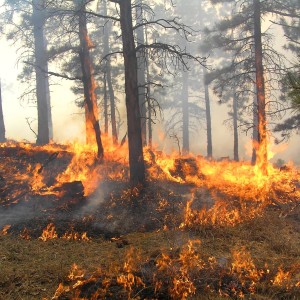There are few things Democrats and Republicans in Washington can agree upon. One is that the western wildfire problem has gotten out of control. From the overwhelming firefighting costs to the amount of acres at high fire risk due to challenges of drought, insects and fuels build-up, the issue has ballooned like the actual fires themselves. Solutions, however, have been hard to find.
According to an August 2015 U.S. Forest Service report, the budget for firefighting has more than tripled over the past two decades. Today, it represents 52 percent of the Forest Service’s budget. Yet, while the percentage the Forest Service spends on firefighting has gone up, its overall budget has been flat. This means less money for programs that support private landowners for such things as fire mitigation that can reduce the risk of wildfires.
While there has been a bipartisan solution, the Wildfire Disaster Funding Act, proposed to solve this problem, Congress still has yet to resolve this issue as we saw with the bill being dropped from the December Omnibus appropriations bill.
But that is only the first step of solving the wildfire issue. We must do more to get ahead of the problem and mitigate wildfire risk, especially when we consider what is at risk: lives, homes and our clean water supply.
Currently, state and federal governments are working to lower the risk of catastrophic fires on public lands, yet don’t take into account neighboring private lands. With the West a patchwork of ownerships, strategies to lower wildfire risk on private and family-owned land must be considered too.
In fact, according to a new report from the American Forest Foundation, one third of the high fire risk in the West is actually on private and family owned land.
Given the high costs of mitigation practices, especially for family landowners, cost sharing and assistance programs can help. Some exist already and the number is growing. But, no amount of government funding will ever cover the costs to entirely mitigate wildfire risk.
This is where we must consider a market strategy.
Markets work in the South, the largest source of timber harvested in America. In Alabama, we have been the leader in finding market-based options to handle the byproducts of our forest management efforts.
Consider the wood pellet market. This industry allows us to convert small diameter trees and underbrush into wood pellets that are used to produce heat or electricity. There is also the new green building industry. It uses small diameter trees to create various laminated wood products.
These markets have been a win-win, economically and environmentally, as we are boosting forest health, protecting against wildfires, and providing family landowners the necessary income to conduct forest practices, without asking the government to foot the bill.
We would do well to examine the success of these markets in the South and encourage similar market-based solutions in the West. While there are a number of ways to do this, there are several that can be implemented immediately.
First, there is a growing interest in social capital investing in the financial world. Wildfire mitigation projects in the West are ideal targets for this type of investment. They produce the raw materials that could be made into various products—either new or existing ones—that turn a profit for investors. But they would also produce a measurable and desirable societal benefit in the form of clean water protection or other goals. We must find ways to make this type of investment feasible.
Southern forest owners have used the market to improve forest health for years. It’s time we give western forest owners the same opportunity.

